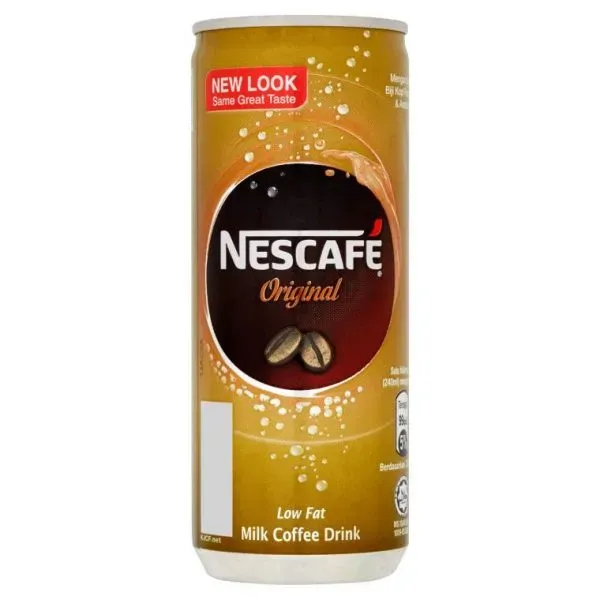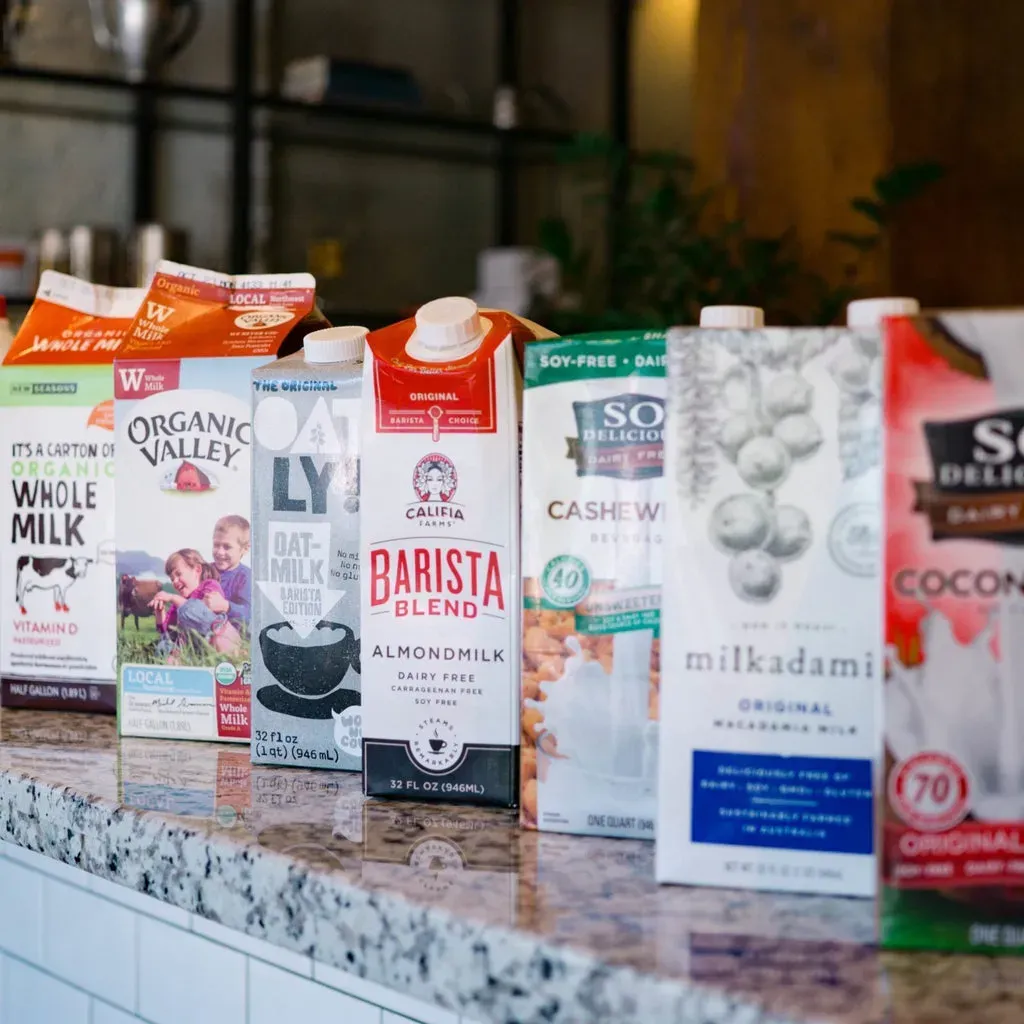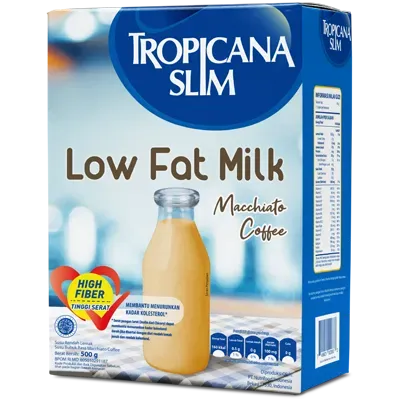Table of Contents
So, you're standing there, bleary-eyed, staring at the milk selection in your fridge or coffee shop. Your mind's on that first glorious sip, but maybe also on keeping things a little lighter. The idea of using low fat milk for coffee pops into your head. It seems simple enough, right? Just swap out the whole milk or cream, save a few calories, and call it a day.
Why Choose Low Fat Milk for Coffee?

Why Choose Low Fat Milk for Coffee?
so you're wondering, "Why Choose Low Fat Milk for Coffee?" It boils down to a few key things, honestly. For starters, calories. A lot of folks are keeping an eye on their daily intake, and swapping out whole milk or heavy cream for a lower-fat option can make a real difference over the course of several cups a day or even just one regular habit. It’s a simple adjustment that can align with broader health goals, whether that's weight management or just reducing saturated fat intake. Beyond the numbers, some people find full-fat dairy simply too heavy or rich in their coffee, preferring a lighter mouthfeel that still provides some creaminess without overpowering the coffee's flavor profile.
Different Types of Low Fat Milk for Coffee

Different Types of Low Fat Milk for Coffee
Dairy Options: Beyond Just Skim
Alright, so you've committed to the low-fat life for your coffee. The first place most folks look is the dairy aisle. Skim milk, or non-fat milk as it's often labeled here in the US, is the obvious go-to. It has the fewest calories and the least fat, practically zero. But let's be real, skim milk in coffee can sometimes feel like adding slightly colored water. It lightens the color, sure, but the body? The creaminess? Mostly absent. Then you have 1% and 2% milk. These step up the fat content slightly – 1% has, well, 1% milk fat, and 2% has 2%. This incremental increase makes a noticeable difference in texture and flavor compared to skim. They offer a touch more richness and body, making your coffee feel less naked, while still keeping the fat and calorie count significantly lower than whole milk.
Plant-Based Low-Fat Contenders
Stepping away from the cow, the world of plant-based low fat milk for coffee has exploded. Oat milk is currently the darling, especially barista blends, which are engineered specifically to perform well in coffee. While not always strictly "low-fat" in the traditional sense (some barista blends add fat for texture), many brands offer lower-fat versions, and even the standard ones can be lower in saturated fat than dairy. Almond milk is another popular choice, typically very low in calories and fat, though it can sometimes curdle in hot coffee or leave a slightly nutty aftertaste. Soy milk has been around the coffee block for ages; it froths well but can have a distinct flavor that some find clashes with their brew. Rice milk is usually the lowest in fat and calories among the plant options but offers almost no body or frothability, making it another watery suspect.
When considering plant-based options for low fat milk for coffee, think about what you prioritize:
- **Frothing:** Oat (especially barista), Soy
- **Lowest Calories/Fat:** Unsweetened Almond, Rice
- **Neutral Taste:** Some Oat varieties, maybe Rice (but sacrifices texture)
- **Avoiding Curdling:** Barista blends are formulated for this
How Low Fat Milk for Coffee Affects Taste and Texture

How Low Fat Milk for Coffee Affects Taste and Texture
Taste Alterations with Low Fat Milk
Let's talk taste when you introduce low fat milk for coffee. The biggest change you'll notice is a reduction in richness. Fat carries flavor, plain and simple. When you strip away a good chunk of that fat, you're also stripping away some of the perceived sweetness and body that whole milk brings. Your coffee will taste... more like coffee. This isn't necessarily a bad thing if you have a high-quality bean whose nuanced flavors you want to shine through. But if you're used to milk smoothing out the rough edges of a darker roast or adding a creamy backdrop, low fat milk can leave the coffee's inherent bitterness or acidity more exposed. It can feel thinner on your palate, and any subtle chocolatey or caramel notes the milk might have amplified tend to fade into the background. It's like turning down the volume on the milk's contribution to the overall flavor profile.
Texture Transformations and Frothing Fun
Beyond taste, low fat milk for coffee fundamentally changes the texture. The lack of fat means less viscosity, less silkiness. Whole milk coats your tongue; skim milk washes over it. This is most apparent when you try to froth it. While skim milk *can* create a mountain of airy foam, it's often brittle and lacks the velvety microfoam needed for latte art or that luxurious mouthfeel. 1% and 2% milks perform slightly better, offering a bit more stability to the foam, but they still fall short of whole milk's capability to create dense, smooth microfoam. Plant-based low-fat options are a mixed bag here; some barista blends are formulated with added stabilizers and fats to mimic whole milk's frothing performance, while others, like basic almond or rice milk, offer minimal texture and produce weak, quickly dissipating bubbles. Getting a good, stable froth with low fat milk for coffee is often an exercise in managing expectations or investing in specific barista-style alternatives.
- **Taste:** Less rich, less sweet, coffee's character more prominent.
- **Texture:** Thinner mouthfeel, less creamy.
- **Frothing:** Foam tends to be airier, less stable microfoam, results vary greatly by type.
Making the Most of Low Fat Milk for Coffee

Making the Most of Low Fat Milk for Coffee
Adjusting Your Technique
So, you've committed to using low fat milk for coffee, whether it's dairy or plant-based, and maybe you're finding it a bit... thin. Don't just pour and pray. You might need to tweak how you prepare your coffee. If you're making lattes or cappuccinos at home, getting good microfoam with low-fat milk is trickier. It tends to produce bigger bubbles that disappear fast. Try steaming it a little cooler than you would whole milk; overheating can break down the already limited proteins and fats, making the foam even weaker. Aerate less aggressively at the start, focusing more on swirling the milk to create that glossy texture rather than just massive bubbles. It takes practice, and honestly, some low-fat options just aren't built for latte art, no matter how hard you try. Manage those expectations.
Pairing Coffee and Milk Wisely
Not all coffees play nice with low fat milk. A delicate, floral light roast might get completely lost when you add even a splash of skim milk. The lack of fat means there's nothing to round out the brighter, sometimes sharper acidity. Conversely, a very dark, bitter roast might have its rough edges exposed rather than smoothed over. Generally, medium roasts tend to be the most forgiving when using low fat milk for coffee. They have enough body and developed flavor to stand up to the lighter milk without being overpowered, and their acidity is usually less pronounced than lighter roasts. Experiment with different roasts and origins to see what maintains its character best when the creamy buffer is reduced.
- **For Lattes/Cappuccinos:** Steam cooler, focus on swirling for texture.
- **Coffee Roast:** Medium roasts often pair best.
- **Adding Flavor:** Consider a tiny dash of vanilla or cinnamon, but go easy.
- **Temperature:** Avoid boiling the milk; it can curdle, especially plant-based types.
Finding Your Go-To Low-Fat Option
With the sheer number of options out there now, from 1% dairy to various plant milks marketed specifically for coffee, finding your favorite low fat milk for coffee is a process of trial and error. Don't just grab the cheapest or the one with the fewest calories immediately. Taste matters. Some unsweetened almond milks are watery and have a weird aftertaste. Some oat milks, while creamy, might have an oat-y flavor that clashes with your specific coffee bean. Barista blends, even low-fat ones, often have added oils or stabilizers to improve texture and performance, which can make a big difference if you're steaming. Buy small cartons of a few different types and taste them side-by-side in your usual coffee. See which one gives you the best balance of flavor, texture, and performance for how you drink your coffee.
Comparing Low Fat Milk for Coffee to Other Options

Comparing Low Fat Milk for Coffee to Other Options
Low Fat vs. The Creamy Competition
so how does using low fat milk for coffee stack up against the usual suspects like whole milk, half-and-half, or even heavy cream? It's a trade-off, plain and simple. You gain significantly lower calories and fat content, which is often the primary goal for choosing low fat options. A splash of skim milk adds almost nothing in terms of richness but keeps your calorie count minimal. Move up to 1% or 2%, and you get a little more body than skim, a hint of that creamy texture, but still stay far below whole milk. Whole milk brings significant richness, a smooth mouthfeel, and superior frothing capabilities, but at the cost of more fat and calories. Cream and half-and-half? They're in a different league altogether, offering luxurious texture and flavor but dramatically increasing the calorie and fat load, turning your coffee into more of a dessert for some. Choosing low fat milk for coffee means prioritizing a lighter profile over the decadent richness of higher-fat dairy, while still aiming for more body than just black coffee or plain water.
Consider these common comparisons when deciding on low fat milk for coffee:
- **Skim Milk:** Lowest calories/fat, weakest texture, airy/brittle foam.
- **1% / 2% Milk:** Moderate calories/fat, slightly better texture than skim, improved but still limited frothing.
- **Whole Milk:** Highest calories/fat among standard milks, richest texture, best traditional frothing.
- **Half-and-Half/Cream:** Very high calories/fat, thickest texture, not typically frothed like milk.
- **Low-Fat Plant Milks:** Calories/fat vary widely, texture and frothing highly dependent on type and brand (e.g., almond vs. oat barista).
Final Thoughts on Low Fat Milk in Your Coffee
So, where does this leave us with low fat milk for coffee? It's not a magic bullet that perfectly replicates the richness of whole milk or cream, and anyone telling you otherwise is probably selling something. You'll likely notice a difference in texture and perhaps how well it holds up in a hot drink. However, for many, the trade-off in body is acceptable for the reduction in fat and calories. Finding the right type – be it skim, 1%, or even a specific barista blend – and understanding how to work with it (maybe skip the elaborate latte art unless you're a wizard) makes a significant difference. It boils down to managing expectations and experimenting a bit. You might find your ideal low-fat coffee companion, or you might just accept that sometimes, a little more fat is simply part of a truly satisfying coffee experience. The choice, and the resulting cup, is yours.
